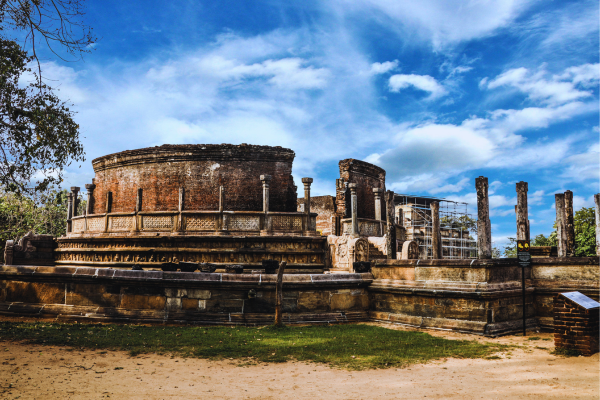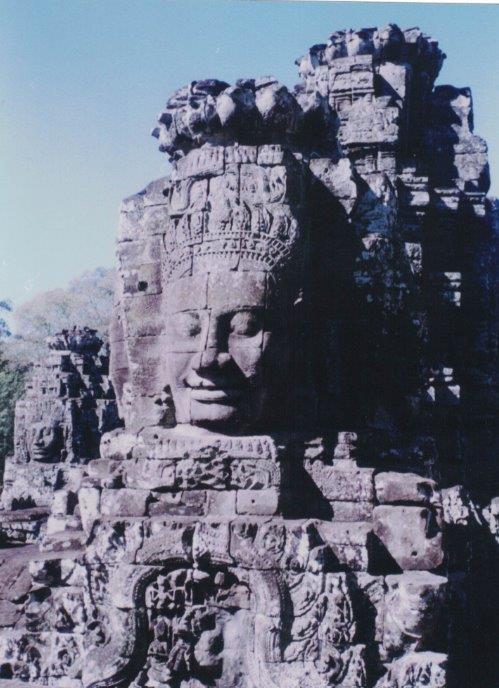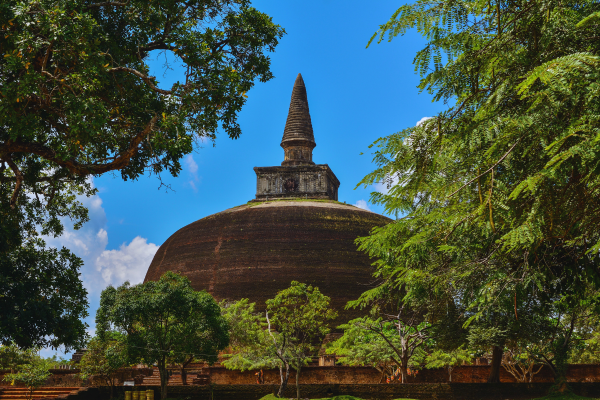A TALE OF THREE CITIES – POLONNARUWA ANGKOR AND BAGAN – (LOWER MYANMAR).- By Bernard VanCuylenburg
 PROLOGUE.
PROLOGUE.
This article is pursuant to the one I last wrote for eLanka “Three religions and a Kingdom – The Glory of Angkor Wat.” The concluding paragraph of that article dealt with the diplomatic relations between medieval Polonnaruwa when King Parakramabahu the Great ruled Lanka and the Khmer empire, ruling from Angkor Wat in Kampuchea. (Cambodia). For reasons of brevity, I omitted to write the concluding paragraph which deals with King Parakramabahu’s foreign policy which had wider ramifications for two countries in South East Asia, Burma and Cambodia. For reasons of clarity Bagan in this article refers to the City – State of Burma, or Myanmar as the country is known today.
KING PARAKRAMABAHU THE VISIONARY.
King Parakramabahu’s policy of fostering ties with the Khmer empire had one negative – albeit temporary – consequence for Lanka. Prior to his ascending the throne, Lanka had excellent relations with Myanmar. (Burma). Myanmar also had very strong relations with the Khmer empire. The King of Burma at the time King Alaungsithu became very suspicious when diplomatic relations were cemented between Lanka and Kampuchea. His biggest fear was that Lanka would deprive Burma a major share of her trade with Kampuchea. In fact he became openly hostile dispensing with diplomatic protocol and began obstructing Lanka’s trade in South East Asia. Consequently relations between Burma and Lanka were strained to the limit which ultimately led to war. What the King of Burma failed to realize at the time was that he had picked on the wrong man. Not for nothing was King Parakramabahu referred to as “The Great”. A man who did not believe in half measures and the great statesman that he was, he first explored all diplomatic avenues and played the part of a pacifist to dispel the crisis which had developed. When all failed he dispatched an army to Lower Burma – and this would give one an idea of the strength of Lanka’s army and Navy at the time. To inflame the matter further, King Alaungsithu of Burma was murdered by his son Prince Narathu who seized the throne and decided to teach Lanka a lesson. (He ruled from 1167 – 1171). He vehemently resented the fact that Lanka had muscled in and established diplomatic and trade ties with Kampuchea. He ill treated Lanka’s diplomats some of whom were imprisoned, and had their vessels and currency confiscated.
KING PARAKRAMABAHU THE GREAT – MILITARY CAMPAIGNS.
KIng Parakramabahu’s reign is remembered for two military campaigns – one to South India to assist the Pandyan King in his war of succession against the King of the Chola empire, and a punitive strike against the Kings of Lower Burma (Ramanna) for perceived insults to Lanka ! He dispatched a formidable force to Bagan (Lower Burma) and the army first captured the city of Pathein and a few other cities including Arimaddhanapura. (the name sounds similar to “Anuradhapura”). King Naraithu had sown a wind and he was now reaping a whirlwind. Burma sued for peace when King Naraithu was assassinated, and diplomatic relations were restored again. One wonders if the Sinhala army had some genre of secret branch, which used the proverbial “Cloak and dagger tactics” because the Burmese chronicles state that King Narathu was assassinated by a Sinhala Hit Squad in 1171. The chronicles known as “The Glass Palace Chronicles of Burmese Kings” is the only English translation of the first portions of the “Hamannan Yazawin” – the standard chronicle of the Kongbaung dynasty of Burma.

THE AFTERMATH.
Following King Parakramabahu’s death in 1186, his successors King Vijayabahu the second and KIng Nissanka Malla maintained strong links with Kampuchea. In 1353 Angkor was abandoned by the monarchy when the empire was seized by the Siamese King Ramadhipathi. (Thailand). Her fortunes improved in 1358 when a gallant Khmer Prince Suryavamsa Rajadhiraja recaptured Angkor and reigned there until 1370. The coup-de-grace to this once proud and glorious kingdom was delivered by her arch enemy Siam (Thailand) when a massive attack resulted in her downfall.

THE INVISIBLE OBVIOUS.
One hundred and fifty years before, a similar fate befell Lanka when Polonnaruwa was attacked and captured by an Indian Prince Magha. By the year 1235 the destruction of Polonnaruwa was complete. Perusing the pages of history, I formed the opinion that the disintegration of Polonnaruwa began with the death of King Nissanka Malla in 1196 AD. The four Kings after him spent their time plotting and squabbling, resulting in a miasma of corruption which pervaded the island which in turn weakened and neglected the kingdom. Nobody cared to take note of the invisible obvious, which manifests itself when corruption sets in. They say that unity is strength. Conversely, disunity results in weakness and it was during this period that the invisible obvious became visible when Prince Magha of the Kalinga dynasty invaded the island with a formidable army heralding a dark period to the golden days of Polonnaruwa. The lessons of history it seems are never learned.
Bernard VanCuylenburg.









